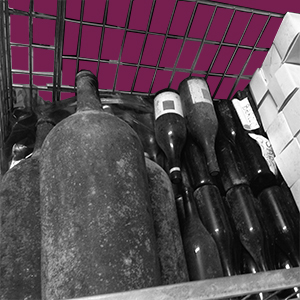 In the popular imagination, the archetypal wine collector is a creature of Harris tweeds, leather club chairs and crystal decanters, laced together with a whiff of Cuban cigar. To the wine skeptic, wine collecting has its own whiff: one of elitism, decadence and, above all, great expense.
In the popular imagination, the archetypal wine collector is a creature of Harris tweeds, leather club chairs and crystal decanters, laced together with a whiff of Cuban cigar. To the wine skeptic, wine collecting has its own whiff: one of elitism, decadence and, above all, great expense.
This very much needn’t be the case. The prerequisite for being a wine collector is simply the act of accumulating bottles for later consumption, Rolls Royce not required. A genuine enjoyment of wine, however, is. My suggestions below relate to wine collecting for drinking; those investing for profit will find no lack of advice elsewhere.
One caveat to this simple definition of wine collector is that collecting should ideally be intentional. At the end of university, I had to admit to myself that the twenty-odd heat damaged bottles accreted in my cabinets over four years of parties didn’t really amount to a personal collection.
More intrinsically, wines should be chosen that will evolve (positively) over time. On the one hand, this is a limited group. The majority of so-called “commercial” wines – i.e. anything with a pastry or cartoon on the label or a fanciful name of the “Menage a Trois,” or “Skinny Girl” variety – are designed for one thing alone: instant consumption, a goal they usually fulfill admirably.
On the other hand, it is not nearly so limited a group as one might think. I recently enjoyed a toothsome, cedary 2006 from Bordeaux originally purchased at HK$140, hardly bank-breaking for anyone intent on pursuing wine more seriously. I’ve had similar experiences with 8-10 year old everyday reds from Italy, Spain and Portugal plus a handful from Washington State and Australia, almost always from “traditional” producers (again, flashy or over-designed labels are usually a contraindication).
Does this apply equally to whites? Sadly no, most whites – particularly “aromatic” varieties like Gewurztraminer, Muscat, Viognier and Sauvignon Blanc – quickly lose their fragrant charm. Sauvignon Blanc especially will often exhibit a bouquet of skunk cabbage if left to slumber too long. However, Riesling frequently pulls it out of the bag, even fairly inexpensive Kabinetts (and even ones with cartoons on the label), layering a mineral topcoat over their base of crystal fruit. The greatest stunt of all is to stash away bottles of non-vintage champagne for a few years and watch them emerge, if not as Krug, then as something appreciably more toasty than before.
All this is to say that style often trumps price when judging a wine’s longevity. Acid, sugar, tannins and even alcohol are preservatives, though wines with lots of the latter and none of the former often sag with time. Since you can’t always tell acid and tannin levels from a label, the trick is to buy one bottle, assess acid (think lemon juice) and tannin (think black tea), and buy more if these are plentiful.
Conversely, high price is no guarantee of age-worthiness, as many a disappointed buyer of gigantic (and now disintegrated) cult wines can attest. This is rather inconvenient for anyone hoping to forgo careful research and simply grab the priciest bottle available. That said, if money is no object, just buy classed growth Bordeaux (bottles not futures). Like Treasury bonds, though they may drop in value, the underlying wine won’t usually fall to pieces, at least over 10-15 years.
If you, like me, are fairly young and highly impatient, you can certainly find pre-aged wines on the market. These are useful for collector dinners, where more seasoned hands often bring wines purchased decades ago. I personally hunt for damaged label bargains and shun “pushed cork” or “low shoulder” lots like they were bell-bottom trousers.
This strategy is solid for old Bordeaux, but potentially shaky for Burgundy (white especially) and positively wobbly for everything else. Because of a less established collector market, pre-80s Italian bottles especially are a game of vinous Russian roulette, albeit one where every few bullets is a liquid epiphany. However, if you’re buying today to stash away, Italians are the horse to back: all life-lengthening acid-tannin “backbone” (a great word for use among Harris tweeds), and very little fat.
And I don’t necessarily mean Sassicaia. The true beauty of building a wine collection is saving bottles nobody would necessarily think to keep. A decade from now, drinking that ‘14 Sagrantino may be a transformative and genuinely unique experience.
Finally, before you embark on your collecting journey, a quick note on storage. While you needn’t start renting a temperature-controlled locker, in our torrid climate a wine fridge is a must. Otherwise, today’s treasures may not end up much better than the bottles of oxidized plonk I had to throw out at the end of uni.
Originally published in the South China Morning Post